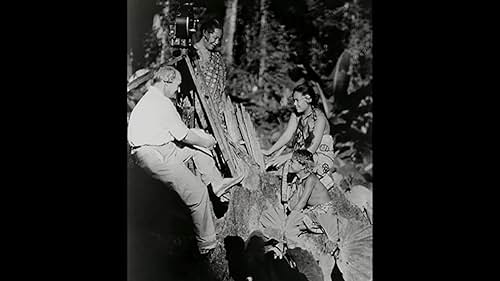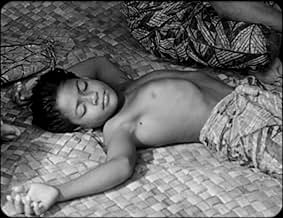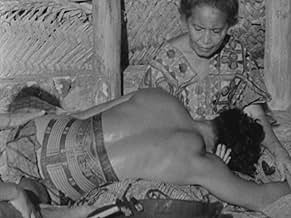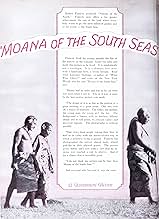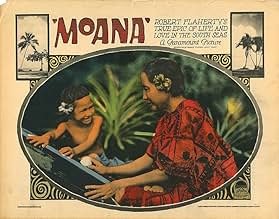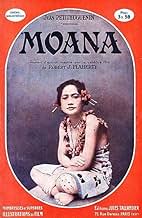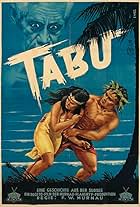VALUTAZIONE IMDb
6,8/10
763
LA TUA VALUTAZIONE
Aggiungi una trama nella tua linguaFilmmaker Robert J. Flaherty presents a docufictional account of a family living in a Samoan village in the early 1920s.Filmmaker Robert J. Flaherty presents a docufictional account of a family living in a Samoan village in the early 1920s.Filmmaker Robert J. Flaherty presents a docufictional account of a family living in a Samoan village in the early 1920s.
Fa'amgase
- Moana's Fiancé
- (as Fa'angase)
T'ugaita
- Moana's Mother
- (as Tu'ugaita)
Emma Hudson
- Extra
- (non citato nei titoli originali)
Trama
Lo sapevi?
- QuizThe word "documentary" was first applied to films of this nature in an anonymous review of this movie written by John Grierson, aka "The Moviegoer", in New York Sun, 8 February 1926.
- BlooperDespite Robert and Frances Flaherty's commitment to showing Samoan life as it had been rather than what it had become after the islands were discovered by Westerners, there's at least one Western industrial product in the film: the knife Moana uses to shave a wood stick to serve as a harpoon.
- Versioni alternativeBeing made in the early 1920s, the film initially had no soundtrack. In 1975, the youngest daughter of the filmmakers, Monica Flaherty, returned to Samoa along with Richard Leacock and Sarah Hudson thanks to a grant from the National Endowment for the Arts, in order to record location sound and folk songs to create a synchronized soundtrack to the film, with dialogue recorded in Hawaii based on what was put together by Samoan lip readers. The sound version premiered in July 1978 under the title "Moana with Sound" and became widely available after its 2K restoration in 2014.
- ConnessioniFeatured in Monica in the South Seas (2023)
Recensione in evidenza
Moana was filmed in Samoa in the villages of Safune district on the island of Savai'i. The name of the lead male character, moana means 'deep water' in the Samoan language. In making the film, Flaherty lived with his wife and collaborator Frances and their three daughters in Samoa for more than a year. Flaherty arrived in Samoa in April 1923 and stayed until December 1924, with the film being completed in December 1925.
The youngest of the children Robert and Frances Flaherty brought with them to Samoa was their then-3-year-old daughter Monica. In 1975, Monica Flaherty returned to Savai'i to create a soundtrack for her parents' hitherto-silent film, including recording ambient sounds of village life, dubbed Samoan dialogue and traditional singing. The resulting "Moana with Sound" was completed in 1980, with help from filmmakers Jean Renoir and Richard Leacock, and first shown publicly in Paris in 1981.
The version I saw on Netflix was the sound version, and I can hardly imagine watching it any other way. Although there may be dubbing and it is not the original cast, this does not seem to hurt the picture (especially because I cannot understand what they are saying).
Maybe this is "docufiction", but it still has some level of authenticity that could not longer be done today. Samoa of the 1920s is not Samoa of the 2010s. Even if some scenes are staged or a little bit fake, it captures the people in about as close to reality as is possible. And for that reason, it is worth seeing if you have an anthropological interest. (I feel like it is more realistic than "Nanook", at least.)
The youngest of the children Robert and Frances Flaherty brought with them to Samoa was their then-3-year-old daughter Monica. In 1975, Monica Flaherty returned to Savai'i to create a soundtrack for her parents' hitherto-silent film, including recording ambient sounds of village life, dubbed Samoan dialogue and traditional singing. The resulting "Moana with Sound" was completed in 1980, with help from filmmakers Jean Renoir and Richard Leacock, and first shown publicly in Paris in 1981.
The version I saw on Netflix was the sound version, and I can hardly imagine watching it any other way. Although there may be dubbing and it is not the original cast, this does not seem to hurt the picture (especially because I cannot understand what they are saying).
Maybe this is "docufiction", but it still has some level of authenticity that could not longer be done today. Samoa of the 1920s is not Samoa of the 2010s. Even if some scenes are staged or a little bit fake, it captures the people in about as close to reality as is possible. And for that reason, it is worth seeing if you have an anthropological interest. (I feel like it is more realistic than "Nanook", at least.)
I più visti
Accedi per valutare e creare un elenco di titoli salvati per ottenere consigli personalizzati
- How long is Moana?Powered by Alexa
Dettagli
Botteghino
- Lordo Stati Uniti e Canada
- 2.993 USD
- Fine settimana di apertura Stati Uniti e Canada
- 2.274 USD
- 15 nov 2015
- Lordo in tutto il mondo
- 2.993 USD
- Tempo di esecuzione1 ora 17 minuti
- Colore
- Mix di suoni
- Proporzioni
- 1.33 : 1
Contribuisci a questa pagina
Suggerisci una modifica o aggiungi i contenuti mancanti

Divario superiore
By what name was L'ultimo eden (1926) officially released in India in English?
Rispondi
